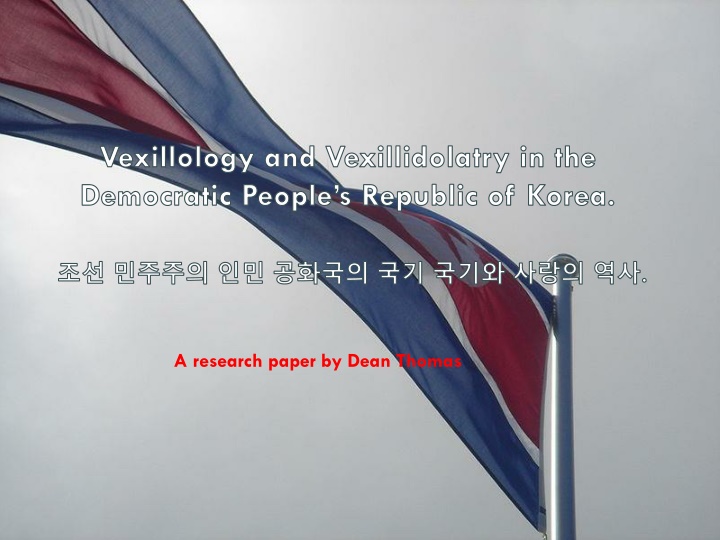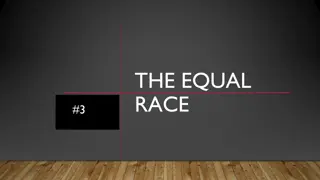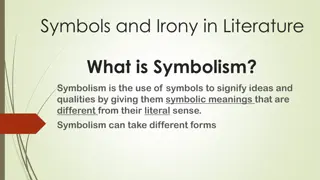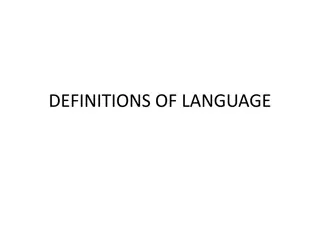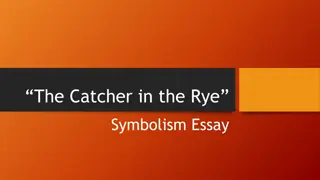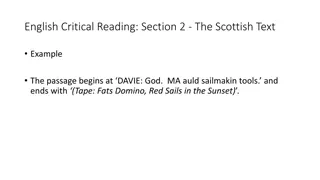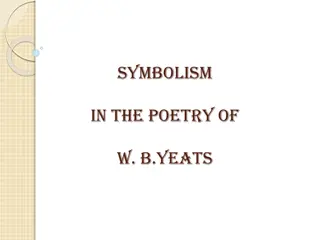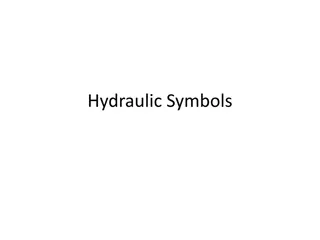Vexillology and Vexillidolatry in the DPRK: Symbols and Symbolism
Delve into the symbolism behind the flags and emblems of the Democratic People's Republic of Korea (DPRK) as showcased through a detailed exploration of their national flag, party flag, and emblem. Understand the historical significance, political undertones, and cultural representation embodied in these iconic symbols. Discover the intricate meanings attached to each element, from the five-pointed red star to the calligraphy brush, providing insights into the ideological foundation of the DPRK regime.
Download Presentation

Please find below an Image/Link to download the presentation.
The content on the website is provided AS IS for your information and personal use only. It may not be sold, licensed, or shared on other websites without obtaining consent from the author.If you encounter any issues during the download, it is possible that the publisher has removed the file from their server.
You are allowed to download the files provided on this website for personal or commercial use, subject to the condition that they are used lawfully. All files are the property of their respective owners.
The content on the website is provided AS IS for your information and personal use only. It may not be sold, licensed, or shared on other websites without obtaining consent from the author.
E N D
Presentation Transcript
Vexillology and Vexillidolatry in the Democratic People s Republic of Korea. . A research paper by Dean Thomas
Chapter VII, Article 170 of the Socialist Constitution of the Democratic Peoples Republic of Korea: The national flag of the Democratic People s Republic of Korea consists of a central red panel, bordered both above and below by a narrow white stripe and a broad blue stripe. The central red panel bears a five-pointed red star within a white circle near the hoist. The ratio of the width to the length is 1:2.
THE NATIONAL FLAGS BEGINNING: 8 SEPTEMBER 1948 : 8 1948 9 Translation: "The Great Leader Kim Il-Sung directing design of Democratic People s Republic of Korea flag and emblem"
The Juche () Star and Disc Political Independence ( ) Economic Independence ( ) Military Self-Sustainability ( ) Kimilsungism ( ) Kimjongilism ( )
The Flag of the Workers Party of Korea Chapter 1, Article 11 of the Socialist Constitution of the Democratic People s Republic of Korea: People s Republic of Korea shall conduct all activities under the leadership of the Workers Party of Korea. The Democratic
Symbolism of the WPK emblem Calligraphy brush for the nation s Intellectuals Hammer for the nation s workers Sickle for the nation s farmers
and small ...
In flower shows ...
And on monuments ...
In Pyongyang ...
In the Demilitarized Zone ... (dmz) At Panmunjom ( ) One of the smallest - but also one of the most-negotiated flags in the DMZ DMZ - -
Kijongdong () World s Third Largest Flagpole This DPRK flag weighs 500 pounds, cannot fly in wet weather as the added weight would bend the pole, and there is a bounty on this flag from the south Korean government. , 500 .
Order of the National Flag One of the highest awards in the DPRK. . Awarded in three classes.
Flags of Korean Peoples Armed Forces Obverse of Army, Navy, Air Force, and Red Guard Flags ., , , Translation: The Unification and Independence of the Motherland (top) For the Freedom and Liberation of the People (bottom)
Anti-Japanese Peoples Guerilla Army Flag. AJPGA founded 25 April 1932
DPRK Young Pioneers Let's get ready for Socialist Homeland at any time! Songdown International Boys Camp Flag
State Arms of the Democratic Peoples Republic of Korea Ch. VII, Article 168 of the Socialist Constitution of the DPRK: The national emblem of the Democratic People's Republic of Korea bears the design of a grand hydroelectric power plant under Mount Paektu, the sacred mountain of the revolution, and bearing the beaming light of a five-pointed red star, with ears of rice forming an oval frame, bound with a red ribbon bearing the inscription "The Democratic People's Republic of Korea."
Acknowledgements Korean Friendship Association Korean Central News Agency Korean Central Television Flags of the World Website North Korea Leadership Watch
